 Hedgehogs are one of the cutest animals around. They resemble little fluff balls with a pointed nose and beady eyes. However, then you touch them and everything changes. You discover that they more closely resemble a bristly hairbrush or a cactus, depending on their mood at that moment. The truth is, there are many things you need to know about if you are considering a pet hedgehog.
Hedgehogs are one of the cutest animals around. They resemble little fluff balls with a pointed nose and beady eyes. However, then you touch them and everything changes. You discover that they more closely resemble a bristly hairbrush or a cactus, depending on their mood at that moment. The truth is, there are many things you need to know about if you are considering a pet hedgehog.
Hedgehog Care
 Hedgehogs are wild animals. They generally come out at night and have a diet that includes a lot of different things. To successfully own one, you must keep all this in mind.
Hedgehogs are wild animals. They generally come out at night and have a diet that includes a lot of different things. To successfully own one, you must keep all this in mind.
A well-rounded diet of low-fat, dry cat food is fine. It should be supplemented with mealworms, crickets, and vegetables to ensure they stay healthy. They also need plenty of room to run during the night when they are most active. This means that a large cage with a flat bottom is best.
Hedgehogs are a little high maintenance in certain temperatures. They have to be kept warm. They thrive in temperatures that are between 75-85 degrees. If the temperature goes too much cooler or two much warmer, they may enter a state called, “torpor”, which means they are lethargic. To counter this, you need to provide an external heat source such as an under-tank heater or a heat bulb.
Hedgehog Quills
As previously stated, quills are something you will have to love when you own a hedgehog.
Flat Quills. At times, these quills may be flat. This typically indicates that they are calm. Basically, everything in their world is good at this moment.
Raised Slightly. If you see the quills begin to come up, this means that they are a little uncertain of their current situation. They are on alert.
Spiky Quills. When your pet is alarmed or spooked, their spikes can become impenetrable.
Personality of Hedgehogs
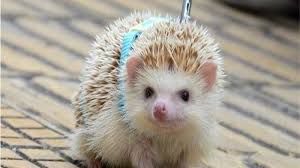 Not every hedgehog is created equally in personality traits. Some love to climb all over their humans and others are more stand-offish. Some are feisty while others are calm. They may try to steal shoelaces and other treasures.
Not every hedgehog is created equally in personality traits. Some love to climb all over their humans and others are more stand-offish. Some are feisty while others are calm. They may try to steal shoelaces and other treasures.
However, most do enjoy being around new smells. If they find a scent that they enjoy, they may attempt to camouflage their own scent using this new and exciting flavor. When “re-scenting” they will vigorously lick the item that smells “right” and then basically spit it all over their quills.
Night-Time Marathons
To hide away from predators, hedgehogs use the cover of darkness to shield them. Therefore, you should be prepared for your prickly friend to wake up about the time the sun goes down.
This is the best time to socialize with them, but you should also be prepared for them to play long after you are ready for sleep. In the wild, these critters will run several miles. They are very active. Wheels, toys, tunnels, and other things are ideal solutions to keep them entertaining throughout the night.
When playing, they are not going to consider the fact that you need your beauty sleep. Plan accordingly. They may tear up their home every night so that you have to clean it the next morning.
As the sun comes up, they will want to rest up for the night ahead. You have to give them a “safe” place to sleep. A large box or plastic storage container that fits well in the cage is perfect.


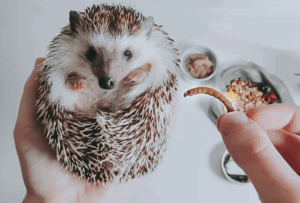 Housing and husbandry also play important roles in raising a healthy hedgehog. They require a warm, draft-free enclosure, typically maintained between 72–80°F, since temperatures that are too low may trigger hibernation attempts and stress. A spacious cage with a solid exercise wheel, hiding shelters, and safe bedding allows room to explore and stay active. Hedgehogs are nocturnal, so their routines should be respected, with minimal disturbance during daylight hours. Regular handling helps them bond and become more confident, but patience is needed as some hedgehogs take time to socialize.
Housing and husbandry also play important roles in raising a healthy hedgehog. They require a warm, draft-free enclosure, typically maintained between 72–80°F, since temperatures that are too low may trigger hibernation attempts and stress. A spacious cage with a solid exercise wheel, hiding shelters, and safe bedding allows room to explore and stay active. Hedgehogs are nocturnal, so their routines should be respected, with minimal disturbance during daylight hours. Regular handling helps them bond and become more confident, but patience is needed as some hedgehogs take time to socialize.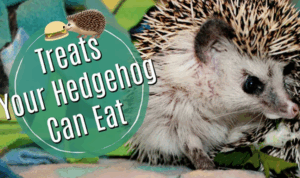 Supplements can further support a hedgehog’s health, especially when their diet may not perfectly replicate natural intake. Calcium and vitamin D3 supplements are commonly used, particularly if the hedgehog consumes primarily insects, which can sometimes be low in key minerals. Omega-3 fatty acid supplements can improve skin hydration and shine, as hedgehogs are prone to dry, flaky skin. Another supplement gaining interest is
Supplements can further support a hedgehog’s health, especially when their diet may not perfectly replicate natural intake. Calcium and vitamin D3 supplements are commonly used, particularly if the hedgehog consumes primarily insects, which can sometimes be low in key minerals. Omega-3 fatty acid supplements can improve skin hydration and shine, as hedgehogs are prone to dry, flaky skin. Another supplement gaining interest is  One of the greatest things about having pets is that you can customize their space, especially if they live in cages or aquariums. Most pets, especially the type that would be in this environment, do not care what is there once you get past their basic needs. Food, water, and maybe a few toys. Therefore, you can add things that you feel are pretty or decorative. If you have fish, you may choose bright plants, the treasure chests, and fancy rocks. If you have a hedgehog, you can also do things such as create custom colored epoxy creations for hedgehog cages.
One of the greatest things about having pets is that you can customize their space, especially if they live in cages or aquariums. Most pets, especially the type that would be in this environment, do not care what is there once you get past their basic needs. Food, water, and maybe a few toys. Therefore, you can add things that you feel are pretty or decorative. If you have fish, you may choose bright plants, the treasure chests, and fancy rocks. If you have a hedgehog, you can also do things such as create custom colored epoxy creations for hedgehog cages.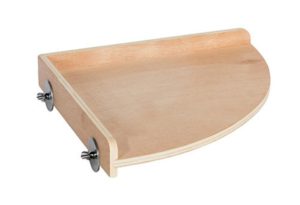 By nature, hedgehogs enjoy expressing their curiosity. Therefore, when planning a cage, you need to provide food, shelter, water, and a few toys. Toys may include wheels and anything made of cardboard. These animals love to chew and arrange their space to be their home.
By nature, hedgehogs enjoy expressing their curiosity. Therefore, when planning a cage, you need to provide food, shelter, water, and a few toys. Toys may include wheels and anything made of cardboard. These animals love to chew and arrange their space to be their home. You are allowed to have fun with your pet’s cage. We promise he or she will not mind. There are no rules against adding a few fake rocks, logs, bushes and other fun things to your pet cage. As a matter of fact, we can come up with a variety of fun things to include, such as wooden platforms and wooden bridges.
You are allowed to have fun with your pet’s cage. We promise he or she will not mind. There are no rules against adding a few fake rocks, logs, bushes and other fun things to your pet cage. As a matter of fact, we can come up with a variety of fun things to include, such as wooden platforms and wooden bridges. Hedgehogs are very cute creatures that are wonderful as pets for some people. However, when raising hedgehogs, you have to keep in mind, that by nature, they are wild. They are domesticated because we have them as pets, but they are also wild animals that long to be back in the wild. This is proven in some of the natural things they do. This is also why it might be fun to consider camping with hedgehogs.
Hedgehogs are very cute creatures that are wonderful as pets for some people. However, when raising hedgehogs, you have to keep in mind, that by nature, they are wild. They are domesticated because we have them as pets, but they are also wild animals that long to be back in the wild. This is proven in some of the natural things they do. This is also why it might be fun to consider camping with hedgehogs.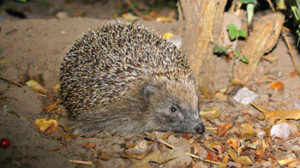 In the wild, hedgehogs are native to specific regions. They can be found in Africa, the Middle East, Europe, and even central Asia. At one time, it is believed that they may have also been found in the Americas, but it was long ago.
In the wild, hedgehogs are native to specific regions. They can be found in Africa, the Middle East, Europe, and even central Asia. At one time, it is believed that they may have also been found in the Americas, but it was long ago. Most hedgehogs show their “wild” side in the way that they behave. They may spend a lot of time rolled in a ball or bite things when they are spooked. They may spend a lot of time creating a den for themselves in their cage or eating the bedding that you provide to them. When startled or unsure of a situation, they can huff and puff. If they like the smell of something, they may self-anoint. Most will choose to sleep all day and stay awake to drive you nuts all night long. These are all-natural behaviors that they would do when in the wild.
Most hedgehogs show their “wild” side in the way that they behave. They may spend a lot of time rolled in a ball or bite things when they are spooked. They may spend a lot of time creating a den for themselves in their cage or eating the bedding that you provide to them. When startled or unsure of a situation, they can huff and puff. If they like the smell of something, they may self-anoint. Most will choose to sleep all day and stay awake to drive you nuts all night long. These are all-natural behaviors that they would do when in the wild.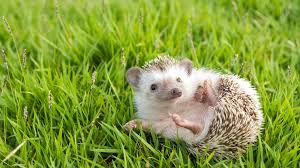 Hedgehogs are wonderful little creatures to have. However, this does not mean that there are not challenges of owning and loving them. If you have dreams of seeing one in the wild, you may face a unique challenge. The best place to see Hedgehogs in the wild may be more of a trip than you are expecting.
Hedgehogs are wonderful little creatures to have. However, this does not mean that there are not challenges of owning and loving them. If you have dreams of seeing one in the wild, you may face a unique challenge. The best place to see Hedgehogs in the wild may be more of a trip than you are expecting. They thrive in warmer clients, but this does not mean they cannot handle a little coolness. However, in the cooler areas of the world, they may hibernate during the winter since they do not enjoy cold temperatures.
They thrive in warmer clients, but this does not mean they cannot handle a little coolness. However, in the cooler areas of the world, they may hibernate during the winter since they do not enjoy cold temperatures. Typically, hedgehogs do not naturally live in Australia, South America, or North America, but they are in those areas. They have been introduced to these continents both in captivity and in the wild. So far, they are able to thrive in any area, although they do prefer to live in dryer areas where it is easy for them to get out and hunt insects for food. This also allows them to eat plants with a particular fondness for watermelons, berries, mushrooms, and more.
Typically, hedgehogs do not naturally live in Australia, South America, or North America, but they are in those areas. They have been introduced to these continents both in captivity and in the wild. So far, they are able to thrive in any area, although they do prefer to live in dryer areas where it is easy for them to get out and hunt insects for food. This also allows them to eat plants with a particular fondness for watermelons, berries, mushrooms, and more.